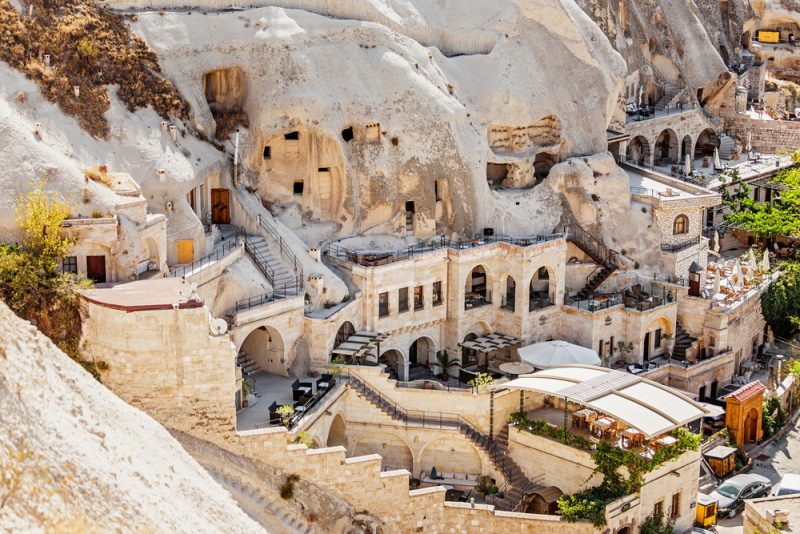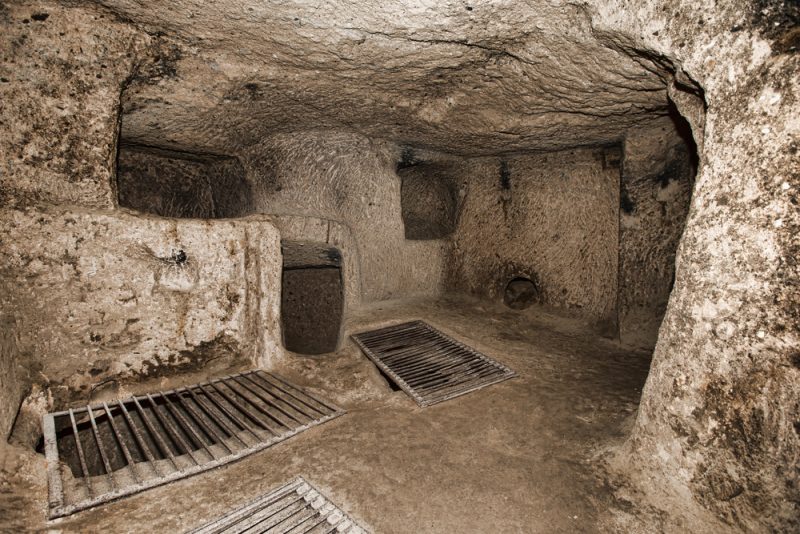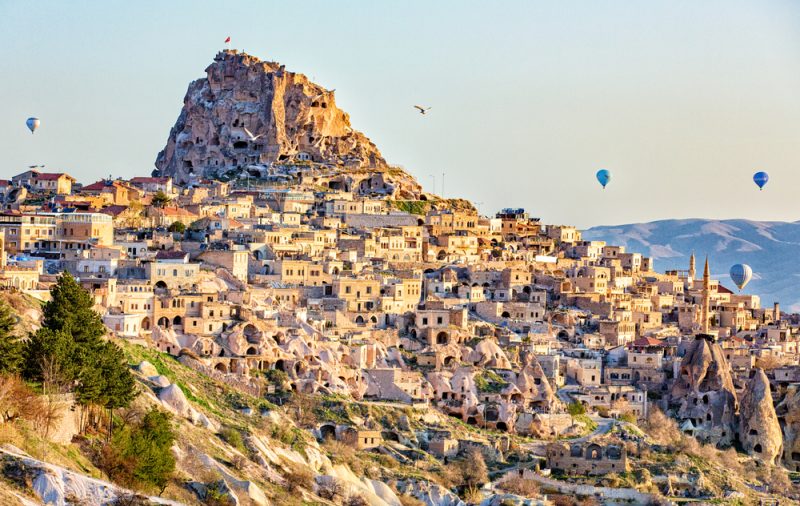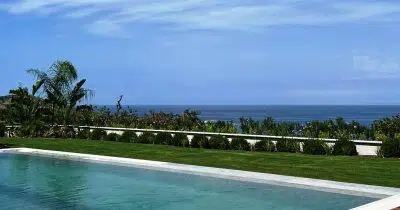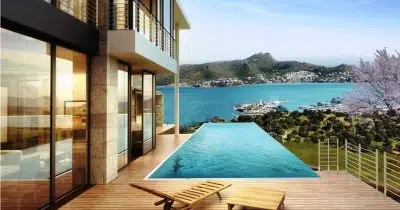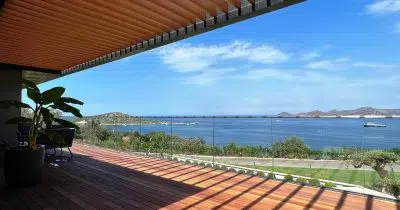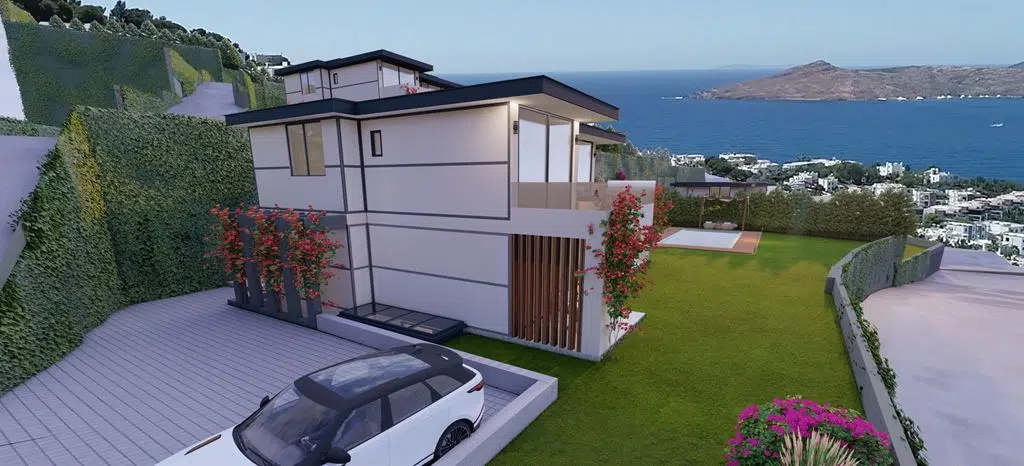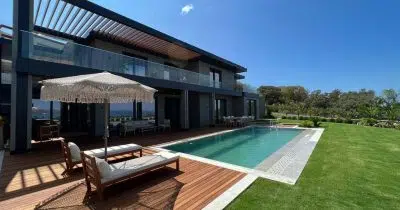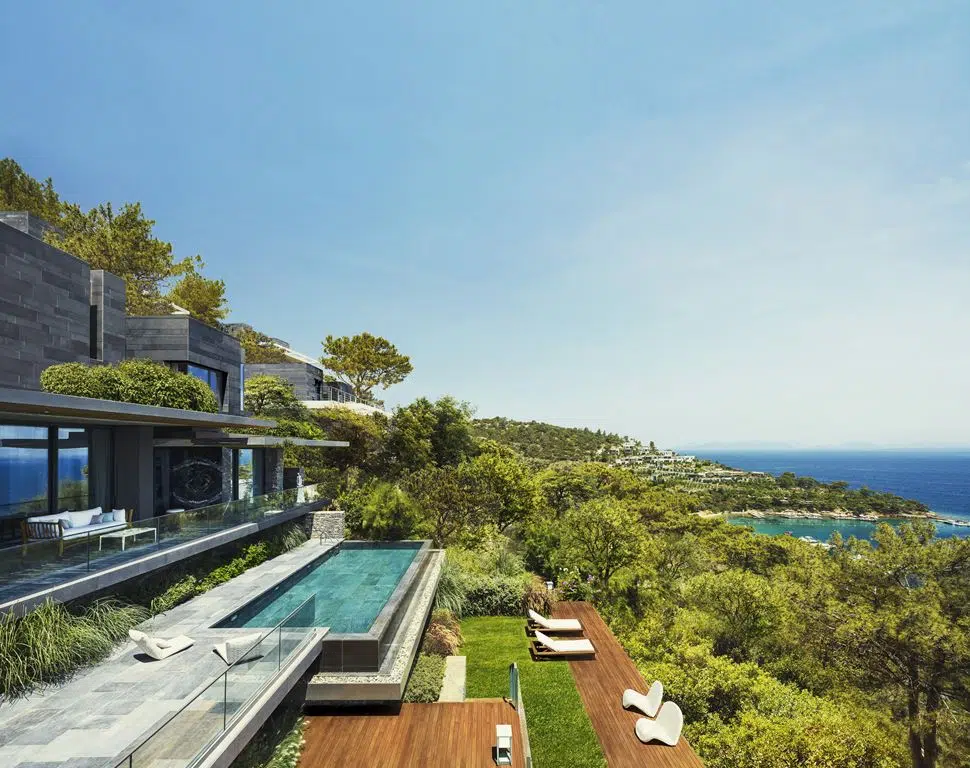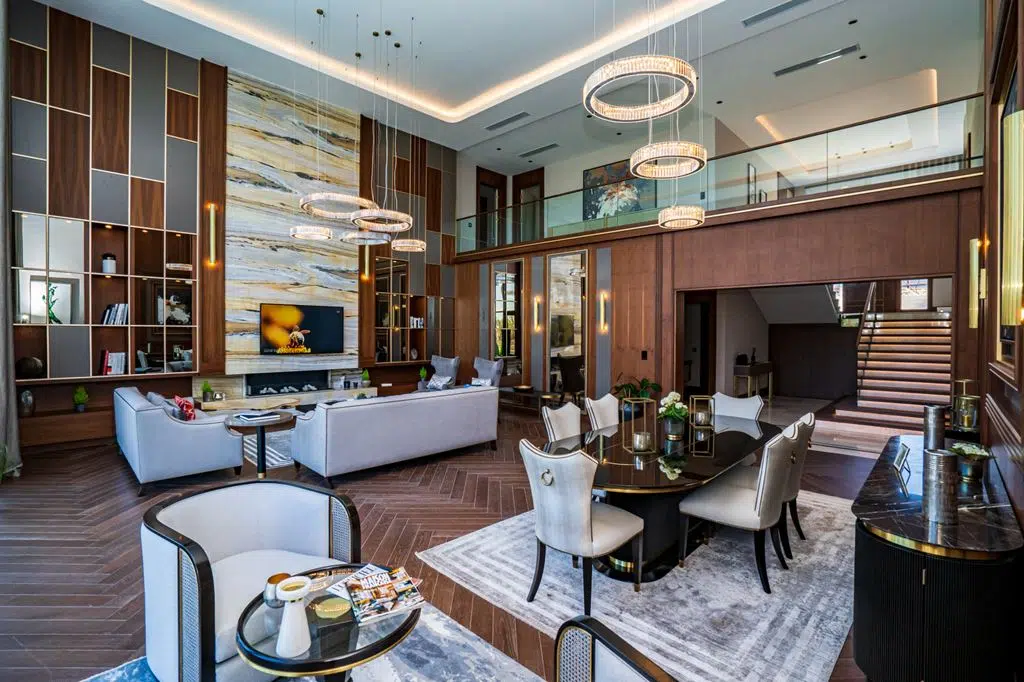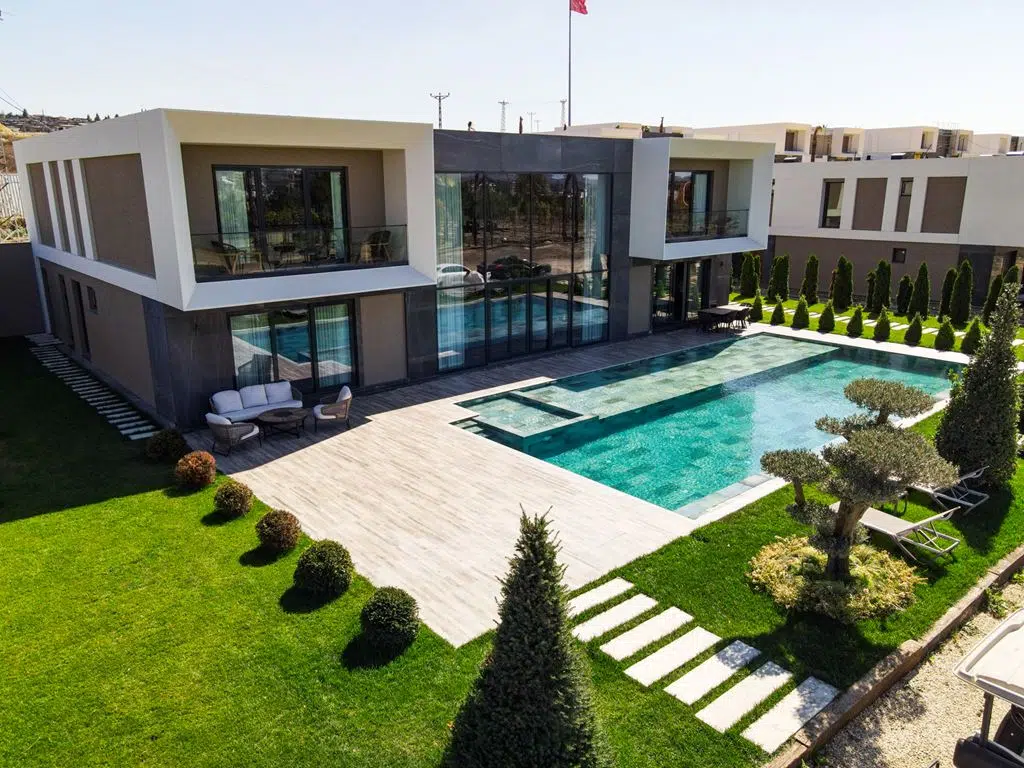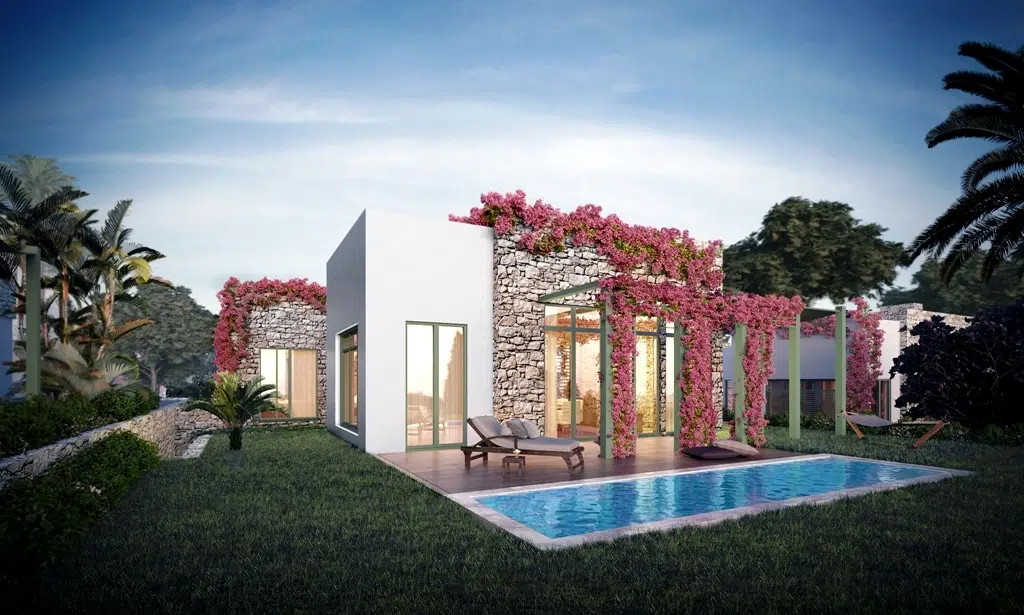The famous place where people live in caves in Turkey is Cappadocia. This vast area seems to exist in a different world. Upon first arriving, the landscape of ancient volcanic rock differs from sandy beaches of Turkey’s Mediterranean and Aegean coasts. Yet, don’t think of it as any ordinary rock because this substance has helped people build homes in Cappadocia for centuries.
Indeed, living in a Cappadocia cave house is not a new trend but an ancient tradition that stretches back to Christianity’s arrival in the area. But don’t think Neanderthal living, though, because these days, shops, bars, restaurants, hotels and inhabitants have all combined the quirks of modern living with the ancient cave décor. Additionally, people didn’t only build cave houses, but also churches and massive underground cities. Read on to find out how, and why they did it.
The Underground Cities and Caves of Cappadocia
Where is Cappadocia in Turkey?
To understand the concept of cave living in Cappadocia, it helps to know about ground geography. Turkey, an incredibly huge country, is the 37th largest in the world, and the country separates into seven different climate zones. Each climate zone has different topography, weather and ground conditions, altitudes and soil conditions. Cappadocia sits in the heart of Turkey’s central Anatolian region. The landlocked area experiences hot summers and cold, snowy winters. Even though, it is at a high altitude, there is little rainfall, and this creates vastly different living conditions.
How Did People Build the Caves Houses and Churches in Cappadocia?
Approximately 3 million years ago, active volcanoes sent deposits into surrounding landscapes. Over many more years, the wind shaped the deposited rocks, hence the fairy chimney rocks that we still see today. Humans also discovered they could carve into the tufa ground.
For early Christians, who could not read or write, they took things further. They built churches out of rocks and painted frescoes to tell stories of early Christianity and how to follow the faith. Indeed, in the beginning, Byzantine Cappadocia was a fruitful time.
To create the caves, the ancient inhabitants of Cappadocia used simple tools like chisels, hammers, and picks made of stone, bronze, or iron. They identified suitable ground locations and carefully excavated the rock to carve out rooms, corridors, and chambers.
The process of excavation involved removing layers of tuff from the natural rock formations to create openings. Workers would carve layer by layer, gradually shaping caves according to their needs. This required precise craftsmanship and knowledge to avoid collapse and ensure structural stability.
As the caves were excavated, additional features like pillars, holes, arches, and columns were often carved to support the ceilings and reinforce the cave structures. These architectural elements helped distribute the weight, preventing cave-ins and ensuring the longevity of caves.
The caves served a variety of purposes for their inhabitants. Some were used as simple dwellings for individuals or families. In contrast, others evolved into complex underground cities capable of housing thousands of people. The caves provided protection from external threats like invaders and harsh weather conditions, offering a safe and secure living environment. The soft stone also provided excellent insulation, keeping interiors cool in summer and warm in winter—a crucial consideration in Cappadocia’s extreme climate.
The construction and expansion of caves in Cappadocia occurred gradually over centuries, with successive generations building upon the work of predecessors. As populations grew and societal needs changed, the caves were continuously modified and expanded to accommodate new functions like storage, livestock keeping, and religious worship.
What is it like to Live in the Cappadocia Cave Homes?
These days, while the old architecture still stands, it has been twinned with all the cons of modern living, from air conditioning to electricity, internet, heating and hot water. It is like living in a typical house with unique and quirky décor and design. If you want to experience Cappadocia cave living, book into a unique cave hotel. Areas of Cappadocia where people live in cave homes, or you can book into a cave hotel include…
Göreme: Goreme is often considered the heart of Cappadocia and is a popular base for exploring the region. The central bus station connecting to the rest of Turkey is here. Goreme does an excellent job of accommodating both luxury and budget travellers, although for house buyers, the price tags are hefty.
Ürgüp: Ürgüp, another picturesque town in Cappadocia, is surrounded by vineyards and orchards and is famous for its wine production, which can be sampled in numerous shops around town. Urgup doesn’t have the same cave feel as Goreme, yet it is still popular with tourists. Urgup was essential in the 11th century as a gateway to Konya.
Avanos: Avanos, a charming town on the banks of the Kızılırmak River (Red River), earns fame for pottery-making and relaxing riverside lunch or boat rides. Many tourists arrive to watch artisans at pottery workshops. It has a more modern feel than other towns, but a great selection of shops and restaurants.
Uçhisar modern town: Uçhisar, the highest point in Cappadocia with amazing views of Mount Erciyes in the distance, is excellent for watching sunsets. Uchisar is small and tranquil, with narrow cobblestone streets and traditional stone houses and structures.
Ortahisar: Ortahisar, known for its unique rock carving castle resembling a massive fairy chimney, is relatively quiet, although the area is famous for underground storage areas. It is much more peaceful than the other towns, but it is a great place to use as a base if you have a car.
Can I Buy A Cappadocia Cave Home?
Yes, you can, but this is a specialist niche, and many are under protected status with strict building regulations. Hence, they are not cheap. Should you want to do any renovations or significant changes, strict rules must be followed. Indeed, while owning a Cappadocia cave house might seem like a good idea, it will certainly break the bank.
Construction of Rock Churches in Goreme Open Air Museum
While Cappadocia’s cave hotels and homes attract much attention, one place that receives the most tourist visitors is the earliest churches of the Goreme open-air museum dating from Byzantine times. Cappadocia was a centre of early Christianity, and the Cappadocia fathers were also from this area. The UNESCO World Heritage Goreme open-air museum, home to numerous cave churches and monasteries from the Byzantine era, features impressive frescos.
The monastery complex consists of rock-cut churches, chapels, monasteries, dining halls, and living quarters spread across a relatively compact area. The structures, characterized by simple exteriors and elaborately decorated interiors, showcase Byzantine church architecture.
Apple Church (Elmalı Kilise): Known for vibrant frescoes depicting scenes from the New Testament, including the Annunciation and the Nativity of Jesus.
Buckle Church (Tokalı Kilise): Features a large, multi-columned nave with impressive frescoes depicting Christ Pantocrator and various saints.
Dark Church (Karanlik church): Named after its dim interior, the Dark Church houses elaborate and well-preserved frescoes illustrating scenes of the Crucifixion and other biblical events.
Barbara Chapel: Decorated with frescoes of St. George slaying the dragon and other saintly figures.
Also See Caves in the Vertical Cliffs of Ihlara Valley
Ihlara Valley, in Cappadocia’s Aksaray Province, stretches for about 14 kilometres along the Melendiz River, with steep cliffs rising up to 100 meters in height, creating picturesque landscapes. This is another place to see cave churches.
Ihlara Valley, adorned with rich vegetation, including poplars, willows, and tamarisks trees, provides striking contrasts against the rugged rock formations and cliffs, particularly during spring and early summer when flowers bloom.
A well-maintained hiking trail runs alongside the Melendiz River, crossing wooden bridges and passing by numerous points of interest, including ancient churches, rock-cut dwellings, and picturesque picnic spots.
The collection of rock-cut churches and monastic complexes dating from the Byzantine periods feature well-preserved frescoes and serve as places of worship and refuge for early Christians fleeing persecution. Some notable churches include Agacalti Church, Kokar Church, and the Church of St. George. Besides rock-cut churches, Ihlara Valley features numerous cave homes once inhabited by ancient communities. These caves served as homes, workshops, and storage areas, as well as pigeon sheds.
Other Areas in Cappadocia to See Ancient Cave Communities
Zelve Open-Air Museum: The Zelve Open-Air Museum offers glimpses into ancient cave homes and monastic settlements that once thrived in this valley. Located near Ürgüp, Zelve features cave houses, churches, and communal areas used by Christian inhabitants. Nichlas Cage also filmed Ghost Rider here.
Çavuşin Village: The unique geological features, including honeycombed cliffs, marvellously reflect Cappadocia’s cave architecture. The soft rock-hewn dwellings and churches, like the Church of St. John the Baptist, feature intricate carvings and panoramic vistas.
Soganli Valley: Soganli Valley features numerous rock-cut churches and dwellings tucked away amidst lush greenery. This picturesque valley off the beaten path, offers serene settings for discovering lesser-known cave sites in Cappadocia.
They Also Lived in Underground Cities like Derinkuyu
So, as if the concept of living in a cave wasn’t strange enough, the ancient Cappadocians also built large underground cities that could house thousands of people and their livestock. These underground cities were built to protect themselves during times of invasion. They included schools, a study, chapels and even a morgue, should anyone pass away.
Derinkuyu Underground City: The most famous city is Derinkuyu, 60 meters underground, discovered in 1963 when a man was renovating his house. The design incorporated various defensive features, like large stone doors to block passages, narrow corridors to slow down attackers, and hidden entrances to evade detection.
To ensure fresh air, the Derinkuyu underground dwelling was equipped with sophisticated stone ventilation systems and vertical shafts that allowed air circulation and prevented the buildup of carbon dioxide. Carved into soft volcanic rock, this expansive underground city was built around the 6th–13th centuries BCE. It was continuously expanded over centuries by various civilizations, including the Hittites, Phrygians, and early Christians.
Kaymakli Underground City: This underground complex is another notable highlight of Cappadocia’s subterranean heritage. Unlike Derinkuyu, Kaymakli’s underground city consists of eight levels, with only four open to the public. Its layout includes living quarters, kitchens, stables, and storage areas, interconnected by tunnels and passages. The city’s ventilation system, which utilizes vertical shafts, testifies to architectural sophistication.
They also Built Cave Castles
Amidst this otherworldly scenery, and alongside the underground complexes, several historic cave castles served as defensive fortifications and centres of political and cultural activity. If you visit, forget about the typical sterotype of a castle, with luxury fittings and furnishings. These are the best cave castles in the world.
Uçhisar Castle: Uçhisar Castle is perhaps Cappadocia’s most iconic and largest rock-cut castle. The castle’s spaces are honeycombed with tunnels, rooms, and passages showcasing the ingenuity of ancient Cappadocians in utilizing their unique landscape for defensive purposes. Uçhisar Castle was crucial in defending the region against invasions and was a refuge during conflict.
Ortahisar Castle: Ortahisar Castle is another notable fortress carved into a natural rock formation distinguished by unique conical spaces. Ortahisar Castle was a strategic stronghold due to its elevated position, allowing surveillance and defence. The castle features tunnels and rooms, some used as residences, storage spaces, and places of worship.
Other Famous Caves in Turkey
Although Cappadocia is the only place in Turkey where you can live in a cave, hundreds are dotted throughout the country. Famous caves include…..
Karain Cave: Situated near Antalya on Turkey’s Mediterranean coast, Karain Cave and archaeological site have yielded valuable insights. This cave has evidence of human habitation dating from the Paleolithic era. Excavations revealed stone tools, artefacts, and remains of ancient hearths, indicating that early humans used the cave as a shelter and for various activities. The cave’s historical importance portrays ancient human societies’ lifestyles, technologies, and cultural practices.
Damlatas Cave: Sitting in Mediterranean Alanya, Damlatas Cave, discovered accidentally during construction work in the 1940s, is famous for its unique air composition, which benefits respiratory health due to the high humidity and low concentration of allergens. Damlatas Cave’s interior also features many impressive stalactites and stalagmites that attract tourists seeking natural beauty and potential health benefits.
Altınbesik Cave: Nestled within Antalya’s Taurus Mountains, Altınbesik Cave features an underground lake. Accessible by boat, the cave’s lake creates a captivating scene with its clear turquoise waters and breathtaking rock formations. Altınbesik Cave’s geological formations feature stalactites, stalagmites, and cascading waterfalls.
About Us – Spot Blue
We are Spot Blue International, and we sell property overseas as retirement homes, summer holiday homes, and also to real estate investors looking to go global with their portfolio. If you want to buy property in Turkey, see our portfolio of homes for sale here. Also, contact us to chat with an agent about living in Turkey. The following articles about this beautiful country will also be of interest.
Seven Regions: Setting aside the topic of where people live in caves in Turkey, if you plan to travel, buy property or live here, the seven geographical regions of Turkey perfect introduce the diversity of the country. The world stereotypes Turkey, yet for good reasons; it cannot be labelled nor packaged into a tidy cliché.
Living in Turkey: Many foreigners live in Turkey in expat communities across the Aegean and Mediterranean coasts and enormous cities like Istanbul and Izmir. While some expats completely sold up and live here, others rent a property to stay for a few years.
Best Place to Buy Property: First-time buyers eager to know the best places to buy property in Turkey may be overwhelmed by the many destinations, from leading cities to small villages. From east to West, Turkey covers 81 provinces and seven geographical regions. However, before we talk about places where sales of homes to foreigners are higher than others, three areas top the list; the Mediterranean coast, the Aegean coast and Istanbul, the largest city in Turkey.
